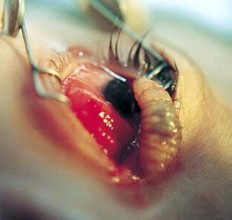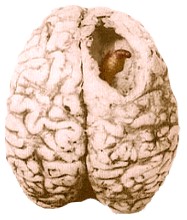  The botfly that uses humans as hosts may be the nastiest little creature you've ever come across!
The botfly that uses humans as hosts may be the nastiest little creature you've ever come across! 'Botfly' is the common name for several types of hairy flies whose larvae live as parasites within the bodies of mammals. There are types of botfly that target horses, sheep, cattle, deer and other mammals. But the one that's most unpleasant is the one that uses humans for a food source for its larvae. We'll tell you all about it below. We hope you have a strong stomach!  A species of botfly (found only in Central and South America) captures a mosquito and lays its eggs on it ... about 30 of them. The botfly then releases the mosquito. Eventually the mosquito lands on a person. The warmth causes the eggs to hatch, and the larvae (or maggots) fasten to the person's skin. A species of botfly (found only in Central and South America) captures a mosquito and lays its eggs on it ... about 30 of them. The botfly then releases the mosquito. Eventually the mosquito lands on a person. The warmth causes the eggs to hatch, and the larvae (or maggots) fasten to the person's skin. The larvae now eat their way into the skin of the person, and begin feeding on muscle tissue. Tiny hooks hold them in place. A hole is left in the skin so the larvae can breathe. A boil-like lesion develops at the site of infestation. After about 6 weeks the larvae have grown fat while dining on your flesh; they eat their way out and drop to the ground, where they pupate. Adult botflies emerge from the pupas in about 20 days, and the cycle starts all over again. People who have had a botfly larvae infestation in their flesh report that they could feel the maggots moving under their skin. Removing the maggots is difficult, as they are hooked to the flesh. Sometimes they can be squeezed out, but often surgery is necessary. Doctors actually advise that victims not try to remove the larvae on their own, as the larvae may burst, leaving maggot parts inside your skin that could lead to infection. Usually the wound heals quickly, with no side-effects other than a small scar. Occasionally there may be infection. However, if the site where the maggots are is easily damaged, quick removal is necessary to prevent other complications. Below left, a botfly maggot is exiting a person's chest. The picture in the centre below shows a botfly maggot being removed from someone's eye, where it had been feeding and growing. At the right below, maggots that get into the brain can cause meningitis and death.    |